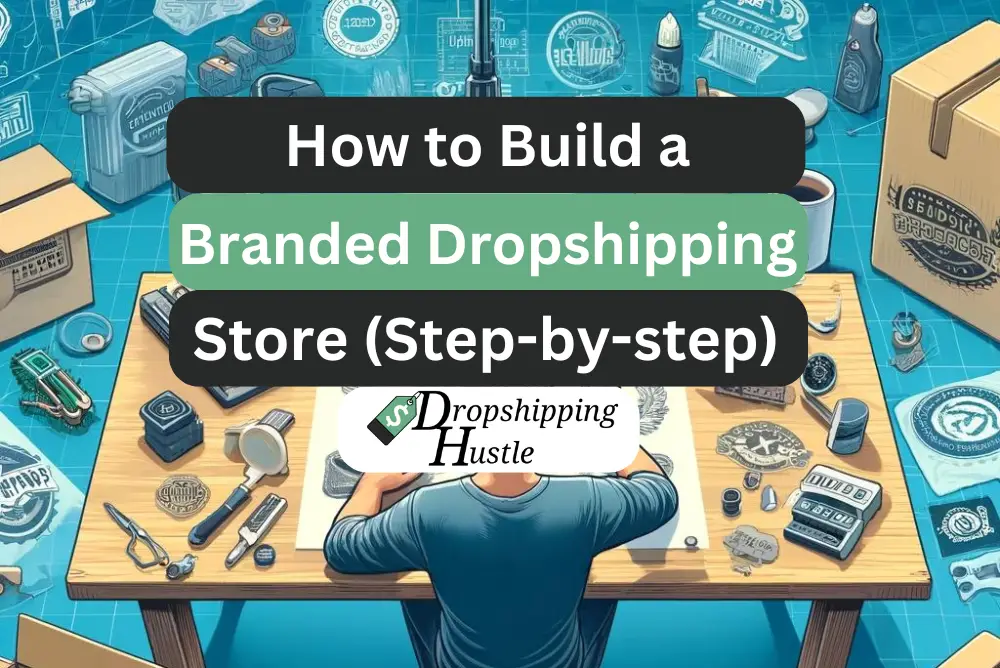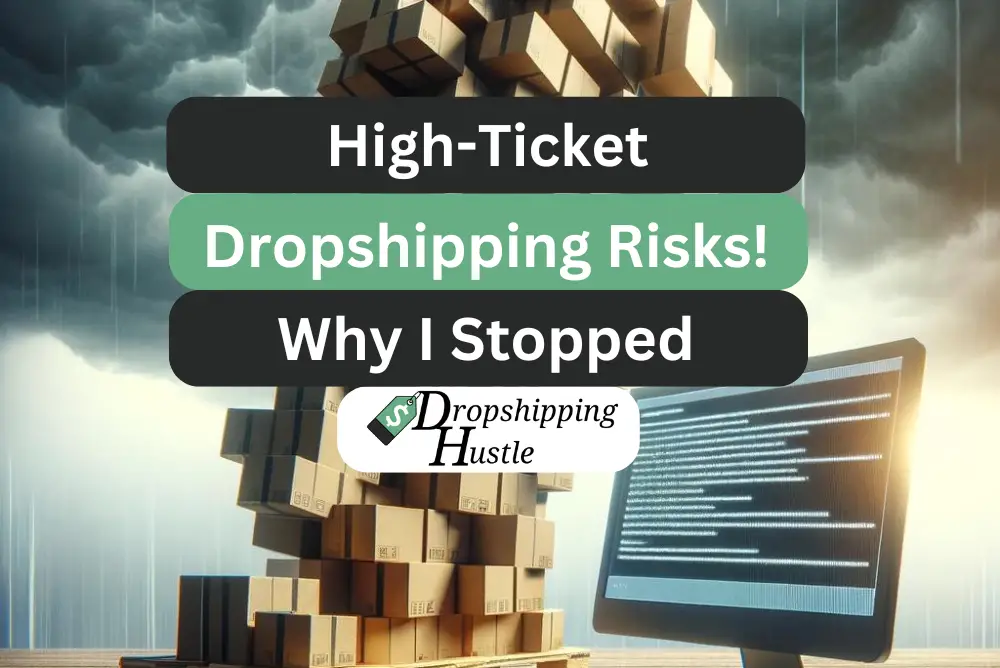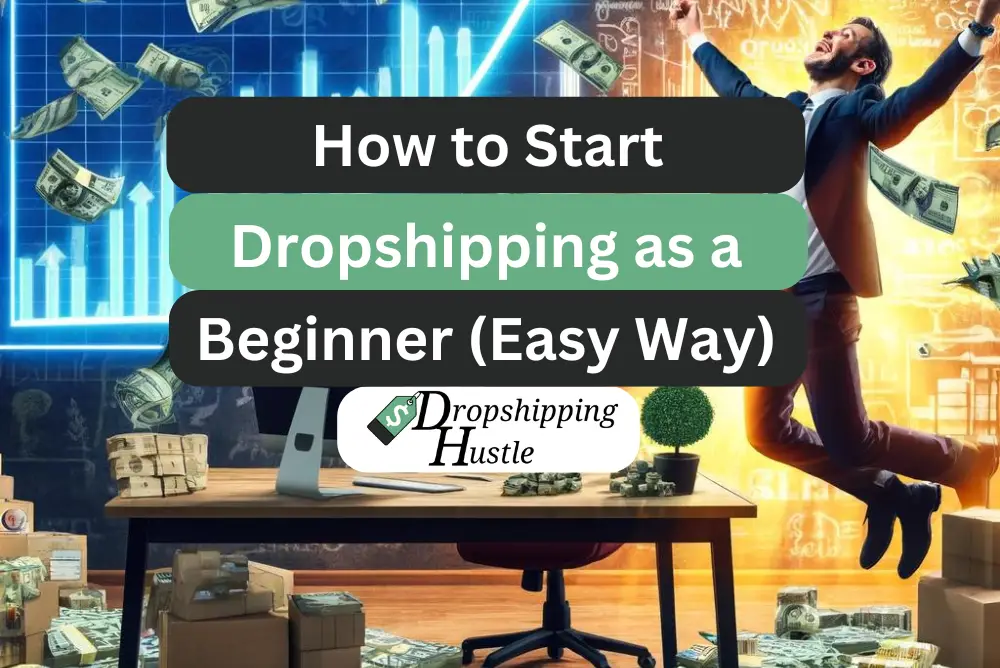As a complete beginner in any new field, there are always words, terms and acronyms that are confusing. Not understanding these terms in the early stages can make it very difficult to learn as many of the words are completely foreign to newbies.
It’s like learning something new but the person teaching you is speaking Japanese 10% of the time. Think of this article as your eCommerce dictionary.
3PL
A third-party logistics (3PL) provider is a company that handles logistics and fulfillment operations on behalf of other businesses. 3PLs provide warehousing, transportation, inventory management, order fulfillment, and other supply chain services to their clients.
This allows companies to outsource some or all of their distribution and fulfillment processes to dedicated logistics specialists. It enables them to focus on core business activities rather than managing complex supply chain operations.
By leveraging the expertise, infrastructure, and technology of 3PLs, companies can often lower costs, improve efficiency, and scale quickly.
The services and capabilities offered by 3PLs also provide flexibility in meeting changing market demands. Businesses use 3PLs as a strategic resource to optimize and transform their supply chain operations.
A/B Testing
A/B testing, also known as split testing, is a method used to compare two versions of something to determine which performs better. It is commonly used in marketing, web development, and other fields.
The process involves setting up an experiment where two variants (an A version and a B version) are shown to website visitors or marketing audience members. The visitors are randomly assigned to either the A or B group. The performance of the two variations is measured, such as click-through rate for ads or conversion rate for website landing pages.
After enough visitors have been exposed to the experiment, the results are analyzed. The version that achieved better results, such as a higher conversion rate, is determined to be more effective. The winning variant is then used going forward.
A/B testing allows marketers and web developers to optimize landing pages, messaging, design elements, ads, and other things to increase desired outcomes. It provides data-driven insights to incrementally improve results. With enough testing over time, the compounding effect leads to significant gains.
Average Order Value (AOV)
Average order value (AOV) is a metric used in e-commerce and retail to measure the average spend per order. It is calculated by dividing total revenue by total number of orders over a given period of time.
AOV provides insight into customer purchasing behavior and helps businesses make data-driven decisions about pricing, promotions, and marketing. A higher AOV generally indicates customers are spending more per transaction. This positively impacts revenue and profit margins.
Some strategies to increase AOV include offering bundle discounts or targeted upsells, providing free shipping above a certain threshold, implementing an effective loyalty program, and analyzing buying trends to create tailored recommendations. However, a balance must be struck to avoid alienating customers with overly aggressive tactics.
Monitoring AOV over time and across customer segments can inform merchandising, inventory planning, and whether the business needs to acquire more customers or focus on getting existing customers to spend more per order.
B2B & B2C
B2B (business-to-business) sales are between companies, such as between a manufacturer and a wholesaler, or between a wholesaler and a retailer. B2C (business-to-consumer) sales are between companies and individual consumers, such as between a retailer and a shopper.
B2B transactions tend to involve higher order values, more rational purchasing decisions, longer sales cycles, and relationship-based interactions between businesses. B2C transactions usually have lower order values, more emotional purchasing drivers, quicker sales, and marketing targeted at individuals.
Companies selling to other companies (B2B) often deal with procurement departments navigating complex buyer committees, while consumer sales (B2C) are more about understanding shopper behavior, mass marketing, and high-volume e-commerce.
The B2B and B2C acronyms describe two distinct business models requiring tailored strategies while trying to maximize customer value.
Bounce Rate
Bounce rate is a marketing metric used to measure the percentage of website visitors who navigate away from a webpage without any additional activity or engagement. It looks at single page sessions where the user exits immediately rather than continuing to view other pages on the site.
A high bounce rate usually indicates that the content or page design is not effectively engaging users. Reducing bounce rate is important for Search Engine Optimization and improving conversion rates.
Strategies include using attention-grabbing headlines, quality images, clear calls-to-action, easy navigation, and relevant, valuable content tailored to the target audience. Analyzing bounce rates, especially comparing across pages and against competitors, allows sites to optimize user experience and retain visitors in each session.
Call to Action (CTA)
A call to action (CTA) is an instruction to the audience designed to provoke an immediate response, usually using an imperative verb such as “buy now” or “sign up today”. CTAs are commonly seen as buttons or links in marketing materials and web pages.
An effective CTA clearly tells the reader what action is desired and provides a way for them to do it, such as a link to purchase a product or fill out a form. Well-designed CTAs utilize color, location, language and other elements to stand out and motivate the reader to take the desired action.
They are an important component of conversions and moving leads through the sales funnel. Implementing quality CTAs is key for marketers driving prospective customers to make purchases, subscribe to services, download content and more.
Chargeback
A chargeback is the return of funds to a consumer, usually handled as a reversal of a prior payment. In the payments industry, it is typically initiated when a customer disputes a charge from a merchant through their bank or credit card company.
The bank or payment processor launches an investigation into the validity of the charge and may refund the money to the consumer while withholding funds from the merchant during that process. Merchants can dispute chargebacks they believe to be invalid.
Chargebacks protect consumers from unauthorized charges but can also negatively impact merchants with high dispute rates. They are a cost of doing business, especially for e-commerce companies.
Monitoring chargeback patterns and having proper consumer policies and protections can help mitigate risks. Chargebacks aim to maintain fairness and security in payment transactions between consumers and merchants.
Click thru Rate (CTR)
Click through rate (CTR) is a digital marketing metric that measures how often viewers click on content or ads to reach a destination page. It is calculated by dividing clicks by impressions and expressing it as a percentage.
For example, if an ad is displayed 100 times and clicked on 5 times, the CTR is 5%. A high CTR signals an ad or content is effective at motivating the desired action, while a low CTR may indicate poor messaging or targeting. CTR is a key optimization parameter for digital marketers, informing decisions about what changes to make to increase response.
Factors like placement, format, headlines and targeting can all influence CTR and provide insights into audience behavior to refine strategies and boost campaign performance.
Conversion Rate
Conversion rate is a marketing metric used to measure the percentage of website or advertisement visitors that take a desired action. For e-commerce, this could be the percentage of visitors that add items to their cart or complete a purchase.
Lead generation may measure how many visitors fill out a contact form. Conversion rate is calculated by dividing the number of conversions by the total number of visitors. A high conversion rate signifies an effective website, ad or campaign to spur the target response. A low conversion rate indicates issues turning visitors into customers.
By tracking conversion rates over time and across segments, marketers can identify optimization opportunities such as changes to page layouts, call-to-action placement, or the sales funnel process.
The goal is to continually test and make improvements to increase conversion rates and revenue.
Cost of Goods Sold (COGS)
Cost of goods sold (COGS) is a business metric representing the direct costs attributable to manufacturing or purchasing a company’s products. It includes costs like raw materials, labor directly involved in production, and manufacturing overhead like rent and utilities. It does not include indirect expenses like distribution, salesforce costs, or R&D.
COGS directly reduces gross profit, which is revenue minus COGS. A lower COGS as a percentage of revenue improves a company’s gross margin. COGS helps businesses understand production costs and set appropriate pricing levels.
Tracking COGS over time gives insight into efficiency and helps identify opportunities to reduce waste and optimize operations. Maintaining accurate COGS records is important for financial health, helping ensure revenue covers production expenses.
Cost per Thousand Impressions (CPM)
CPM is a marketing metric used to measure the cost effectiveness of advertising campaigns based on impressions. Impressions refer to the number of times an ad is displayed. CPM represents the cost an advertiser pays per thousand impressions.
For example, if an ad campaign cost $2,000 and generated 400,000 impressions, the CPM would be $2,000/400 = $5. The lower the CPM, the more cost efficient the campaign is at reaching the target audience. CPM provides a useful benchmark to compare campaign costs across media channels and placements.
Factors like audience targeting, engagement, and conversion rates also help determine the overall return on investment. But CPM is an insightful metric for evaluating media costs and campaign scalability. The goal is to control CPMs while maximizing reach and outcome performance.
Cross-Sells & Upsells
Upselling and cross-selling are sales techniques for increasing purchase value, but differ in their approaches.
Upselling aims to persuade the customer to purchase a superior, often more expensive version of the original product or to add additional features and accessories. For example, upselling a basic cable package to include premium channels and DVR service. The upsell builds on the initial interest to increase the transaction amount.
Cross-selling seeks to sell complementary items, rather than upgraded features. For instance, cross-selling french fries when the customer orders a burger, or headphones to go with an MP3 player purchase. The cross-sell adds related products that provide an enhanced bundled solution.
Both techniques concentrate on uncovering additional customer needs to generate more revenue per sale. But upselling provides an enhanced version of the original item, while cross-selling offers other useful products to consider.
Customer Acquisition
Customer acquisition refers to the strategies, tactics and costs involved with attracting new customers to purchase a company’s products or services. It is a key business process for driving growth by building a loyal customer base.
Effective customer acquisition relies on multifaceted efforts like market research to identify high-value prospects, tailored advertising to reach and influence them, as well as conversion optimization to compel first purchases. Acquiring customers sustainably requires providing a positive customer experience that fosters loyalty and referrals.
While expensive at first, quality customers generate repeat business and long-term profitability through retention. Businesses must balance customer acquisition costs against projected lifetime value to ensure marketing expenditures provide an acceptable return on investment.
Customer Lifetime Value
Customer lifetime value (CLV) is a prediction of the net profit attributed to the entire future relationship with a customer. It estimates the average revenue a customer will generate over their tenure with a company minus the costs to acquire and serve that customer.
A high CLV indicates substantial profit potential from long-term customers. CLV helps businesses assess marketing costs, sales opportunities and customer retention strategies. Companies aim to maximize CLV by both acquiring high-value customers and nurturing relationships through excellent service, loyalty programs and other engagement tactics.
They also segment customers based on projected CLV to focus resources on the most profitable ones. Major factors in modeling CLV are the average order value, purchase frequency rates, customer churn probabilities and projected operating expenses over time.
Customer Retention Rate
Customer retention rate is a metric that measures the percentage of customers a business retains over a specific time period. It is calculated by taking the number of customers at the end of the period and dividing it by the number of customers at the beginning of the period.
A high retention rate indicates a company’s ability to retain and expand existing customer relationships over time. Building loyalty through excellent products, service and engagement helps retain more customers. Retention is often less costly than acquiring new customers. Analyzing retention across customer segments helps identify areas for improvement.
Overall, customer retention rate is a key indicator of the long-term value a business provides and the health of their customer relationships.
Minimum Advertising Pricing (MAP)
Minimum advertised pricing (MAP) is a pricing policy set by manufacturers or publishers that establishes the lowest price a reseller can advertise or promote a product. The goal of MAP is to prevent price wars between retailers that could harm a brand’s perceived value.
MAP policies allow resellers to independently set final sales prices but prohibit advertising prices below a certain level. For example, a manufacturer may set a MAP of $100 on a product. Retailers can choose to sell it for less, but cannot advertise it for under $100 in ads, mailers, or online.
This allows room for negotiation while discouraging steep price cuts. MAP policies aim to balance healthy price competition with maintaining stable pricing that upholds profit margins across the supply chain.
Pay Per Click (PPC)
Pay-per-click (PPC) is an online advertising model used to drive traffic to websites, where advertisers pay a fee each time their ad is clicked. It provides a way to bid for ad placement in a search engine’s sponsored links or on a content site when specific keywords are searched.
When a visitor clicks the ad, they are directed to the advertiser’s website. PPC helps businesses get their site in front of motivated searchers and only pay when clicks occur, making it a cost-effective way to reach potential customers.
Factors like bid price, keyword relevance, and ad quality impact placement and clicks. PPC ads are flexible and allow real-time optimization. Analyzing click-through rates and conversion rates from ads is key to refining campaigns.
Return on Ad Spend (ROAS)
Return on ad spend (ROAS) is a performance marketing metric that measures the revenue generated per amount spent on advertising. It is calculated by dividing the total revenue by the total ad cost over a period of time.
For example, if a campaign cost $1,000 and generated $5,000 in sales, the ROAS would be 5 ($5,000 revenue / $1,000 ad spend). A higher ROAS means advertising is efficiently generating revenues. Setting target ROAS helps guide budgeting and assess campaign profitability. ROAS can be used to compare search, display, social media and other ad channels.
Analyzing factors like ad targeting, bidding, timing and creative can optimize ROAS. It provides a useful measure of marketing effectiveness and return on investment. By continually working to improve ROAS, businesses can gain sales and revenue from their advertising dollars.
Stock Keeping Unit (SKU)
Stock keeping unit or SKU refers to a unique numeric code assigned to a single product or item for inventory management purposes. SKUs identify distinct product variations such as size, color, packaging options and help track them through warehousing, distribution, sales, and accounting.
For example, a blue t-shirt may receive a different SKU from a red version of the same shirt style. The SKU would be printed on the item’s barcode and used to monitor inventory quantities at various stages of the supply chain. Having a SKU system provides more granular data compared to just tracking products by name only.
It improves visibility into product sales, stock levels and turnover to optimize future manufacturing, merchandising and marketing efforts. Implementing SKUs allows businesses to better organize, track and manage their diverse product catalog and operations.
Social Commerce
Social commerce refers to the practice of using social media platforms and online communities to drive sales. It provides a way for retailers to engage customers through social sharing and peer recommendations to influence purchasing decisions.
This differs from e-commerce through the leveraged use of social interactions and user-generated content. Examples of social commerce in action include personalized shopping recommendations based on social data, social media ad targeting, showcasing user reviews, and enabling purchases directly through social platforms.
The familiarity and network effects of social platforms help drive trust in transactions. Businesses can also gain valuable insights from social behavior and engagement data to improve their strategies. Social commerce focuses on creating an efficient omnichannel shopping experience that blends social media engagement with convenient purchasing online.
Social Proof
Social proof refers to the psychological phenomenon where people look to others to guide their own behavior and decisions. In marketing, it involves leveraging earned endorsements, ratings, reviews, testimonials, case studies, and other user-generated content to demonstrate a product’s credibility and build trust in the brand.
Displaying that others are happily using a company’s services provides reassurance for prospective customers that it is a wise choice. Social proof builds confidence that the offering will live up to expectations and is worth purchasing. It provides peer validation that alternatives cannot easily replicate. Savvy marketers utilize multiple forms of social proof across the buyer’s journey to reduce skepticism and encourage conversion.
But care must be taken to ensure genuine advocacy instead of manufacturing disingenuous hype. Authentic community sentiment is the key to effective social proof.






Leave a Reply